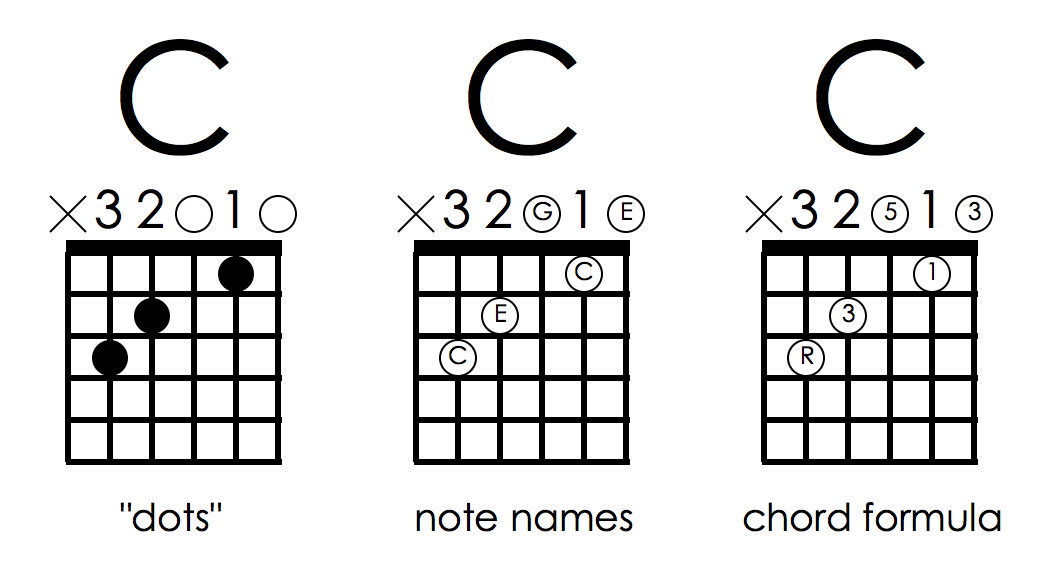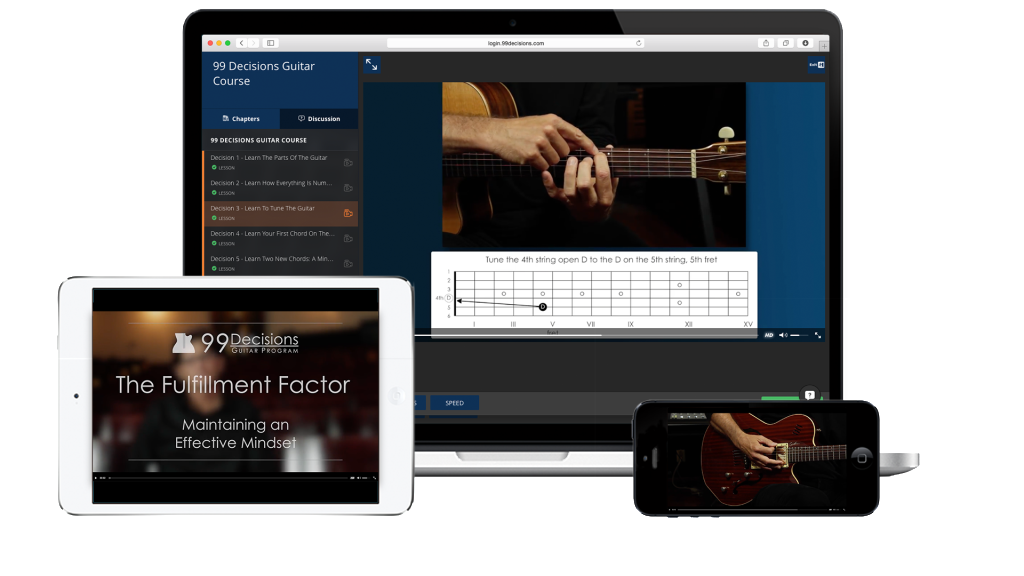This blog post will address those that wish to strengthen their skills in applying their theory knowledge to the guitar. You need a solid understanding of basic music theory & the note names on the guitar fretboard to do the activities suggested here.
Most people start out learning their chords & scales using diagrams that have dots on some kind of grid representing the guitar fretboard. Each dot is on a line representing a string, behind a line representing a fret. This is a very straight forward way for the brain to deal with where to put your fingers. It’s all about the location of the notes.
This is a great way to get to a functioning level of guitar playing. You can play songs & do guitar solos, blissfully ignorant of the true identity of each note. Awesome.
No, really. I truly think this is awesome. I love that a human can become a highly functioning musician & not really know what they are doing… in terms of music theory, that is. They are drawing from an internal musical sensibility that we all possess because we’ve been listening to & absorbing music from birth. Some of these humans are on the cover of guitar magazines.
However, when one is ready to take it to the next level, one needs to start “seeing” those dots as actual notes, where each dot has a letter name (& maybe a sharp or flat) and a number name (which is a reference to the Major Scale).
You (yes, you’re the “one” I’ve been referring to) need to get to where you are thinking about them like this all the time when you play. Or rather, when you want to think about them like this, because there is a lot to be said for playing from a state of anoesis. (look that up)
You need to cultivate this habit of being cognizant of the note’s identity.
So it behooves you to create as many experiences of thinking about these notes as you can, and a simple way to do this is by rote (look that up too). You want to write out all the chords & scales you are currently working on chord diagrams & neck diagrams using letters & numbers.
Here are some examples of what this looks like…
This is the good ol’ C major chord:
And the C major Scale, in all its music theory glory:

(It is easy to find these kinds of diagrams online for reference, if you don’t have reference materials already. And, “chord formula” is the equivalent of “scale degrees”.)
You want to do this repeatedly. As in, every day. Or, most days, if you have others things to do, like sleeping & eating. And it doesn’t have to look all pretty like this. Just write the letter or number in place of a dot.
So go find yourself some blank chord diagrams & neck diagrams and get to it!
Okay, since you asked- here are some for your convenience… chord diagrams & fretboard diagram.
Essentially, you are trying to simulate the experience of a college music major. They have to deal with the deep dark depths of music theory every single day. And that’s precisely what it takes to get music theory down so well that it starts to actually be beneficial to your playing. Don’t be afraid of it… you have learned plenty of things in your life just as involved as this, so trust that you will be able to get a firm grasp on it if you consistently apply yourself.
I cannot emphasize enough the importance of being able to visualize your vocabulary on your fretboard. This way to get the names & numbers down is pretty straight forward. The more you do this, the more you will eventually start to see these names & numbers when you watch your left hand playing the guitar.
That when the magic starts to happen. You will be blissfully knowledgable about what to do with these notes… so that you can create freely in the moment.
Once you’ve internalized this kind of information, you will be able to do just that.
In a future post, I will discuss other drills & activities that will raise your applied theory skills to ninja-like levels.




Leave A Response